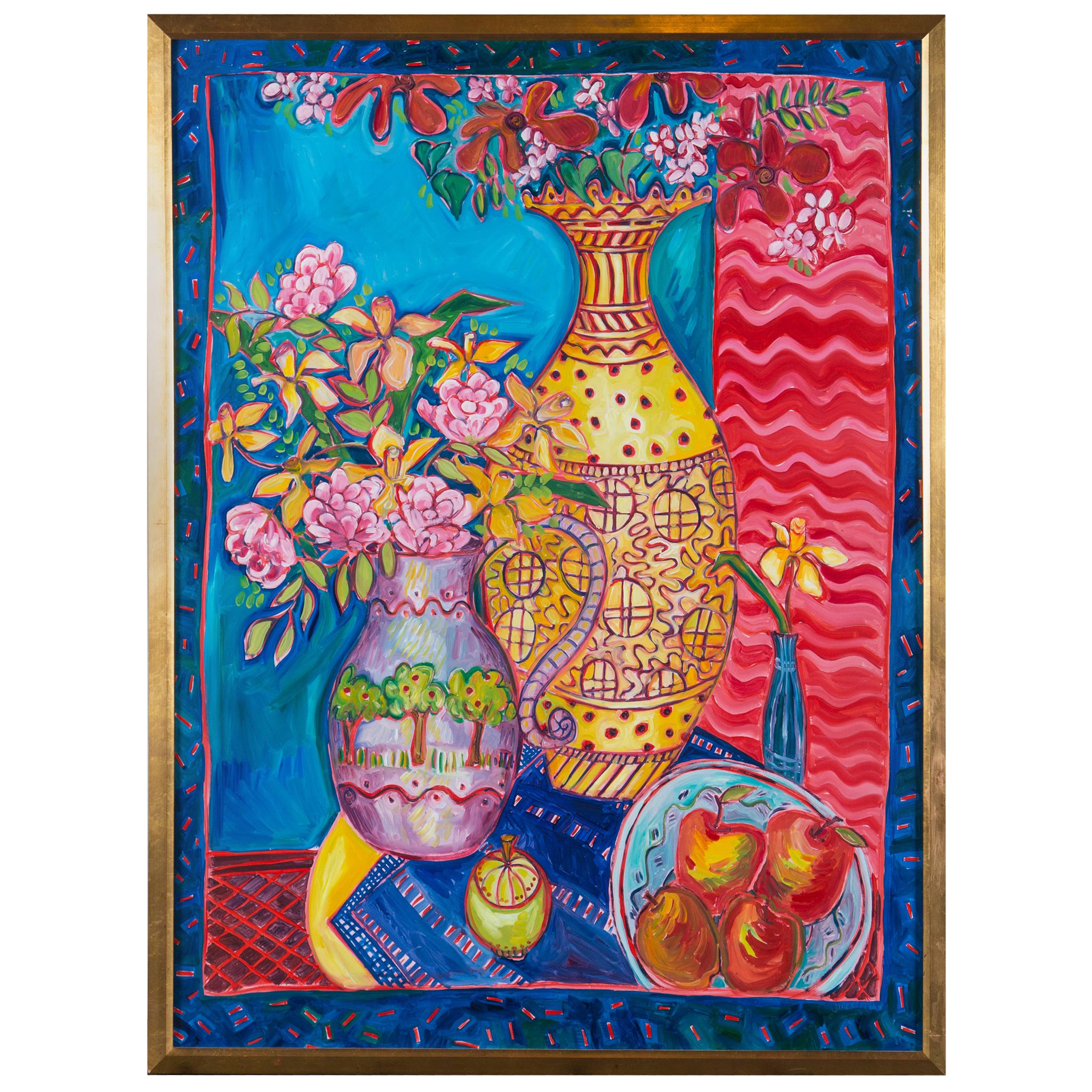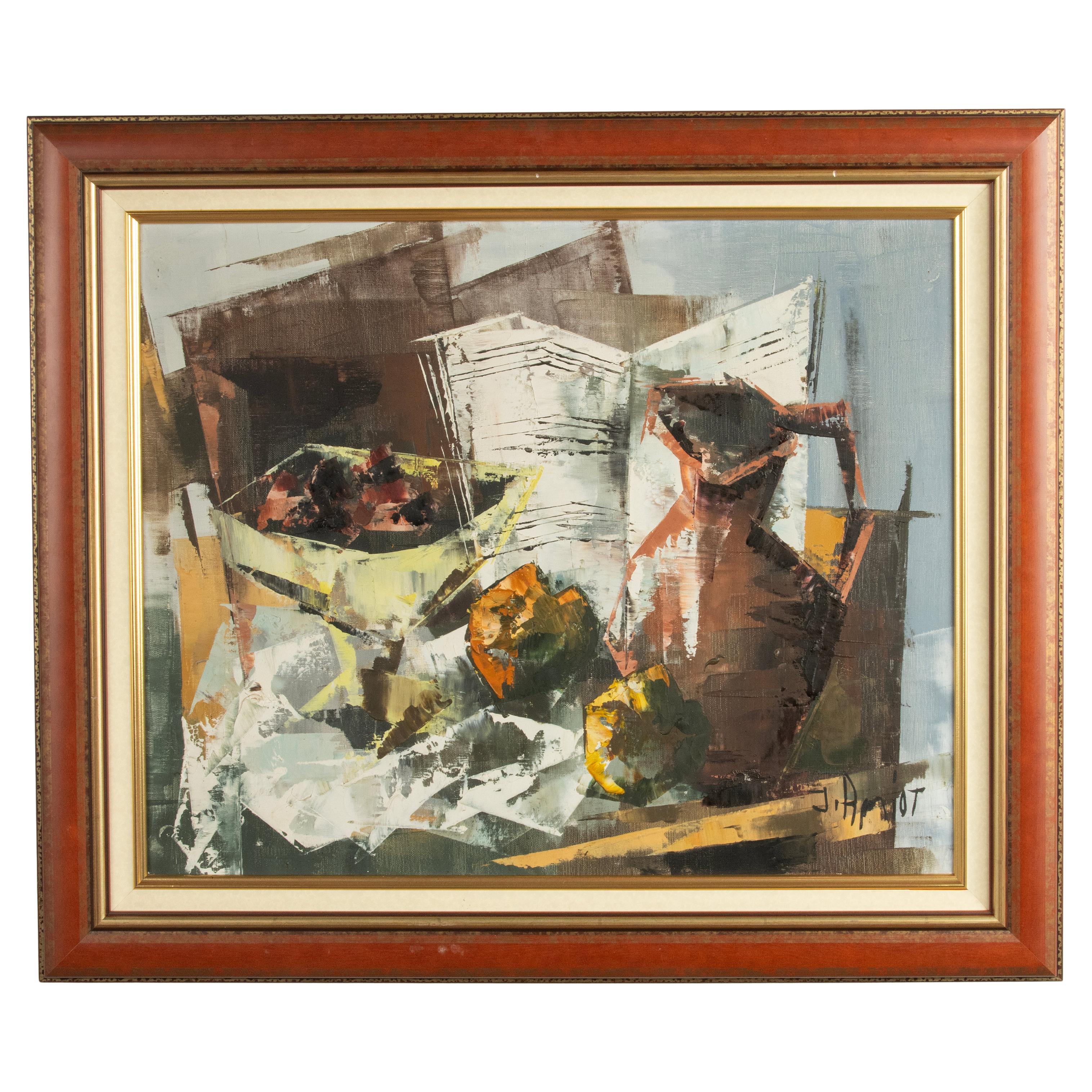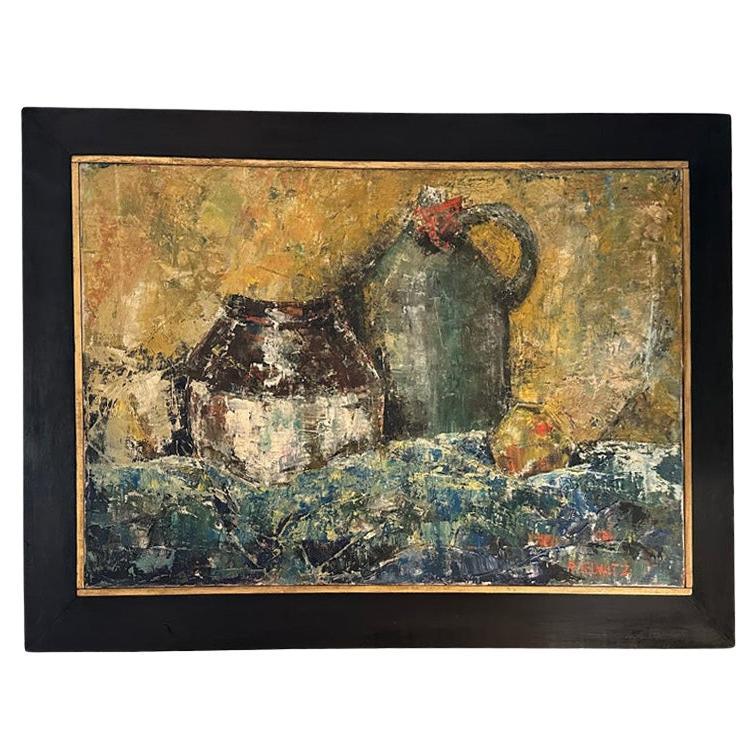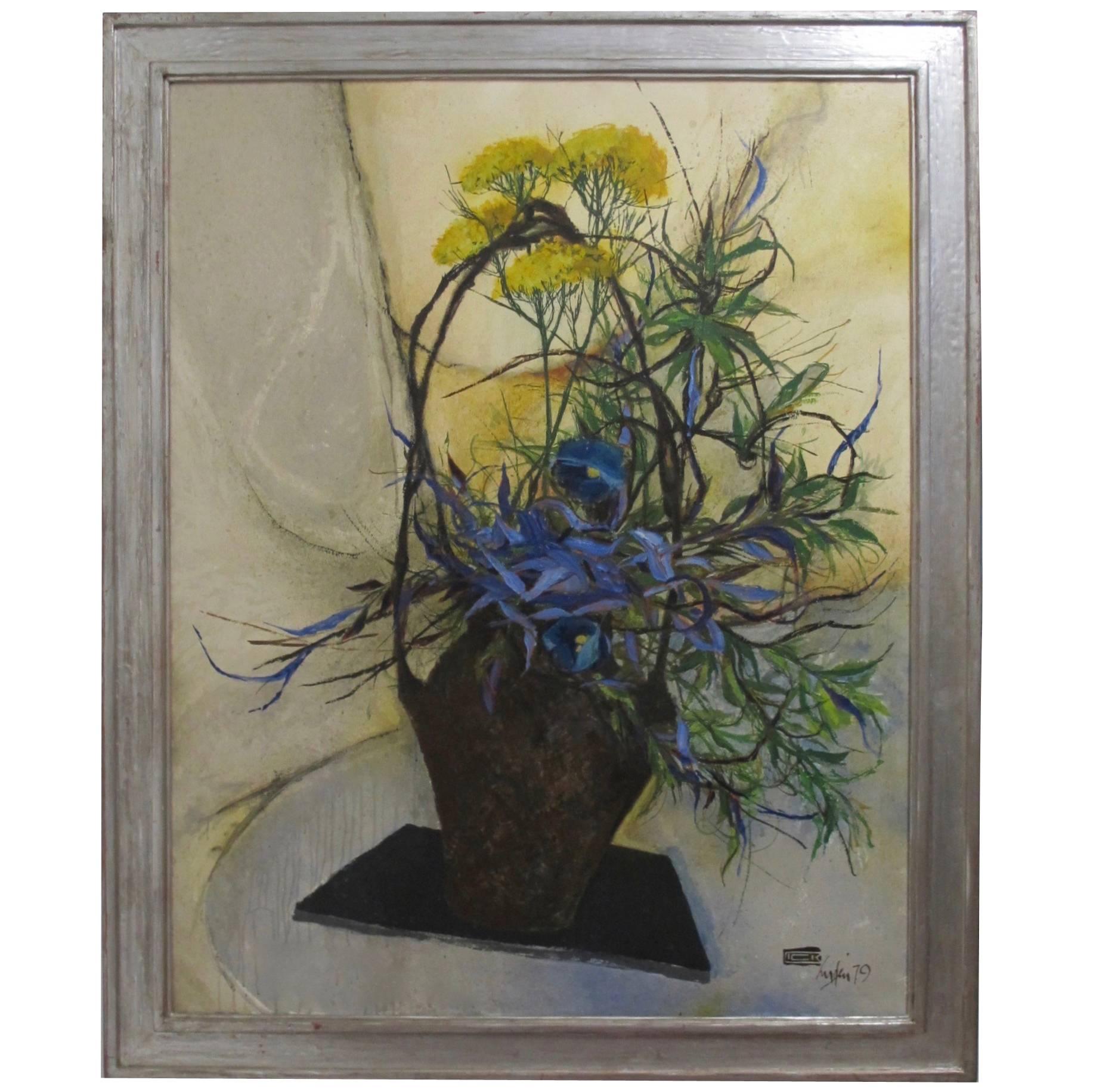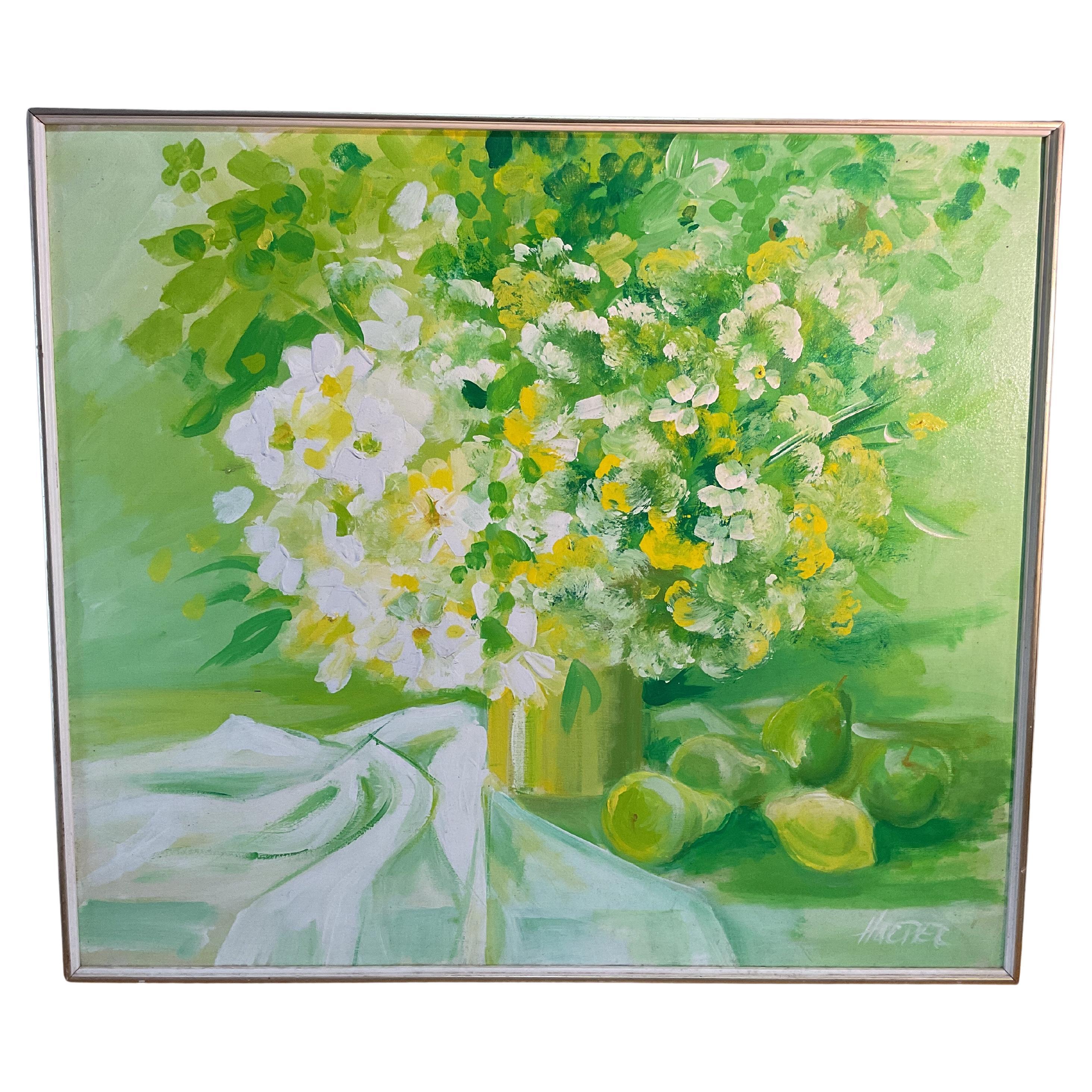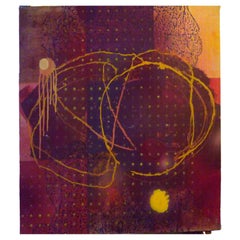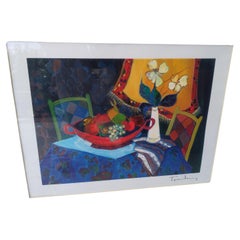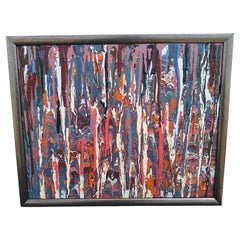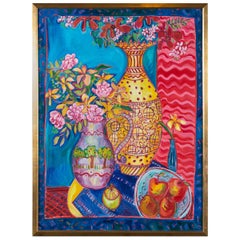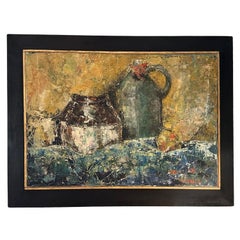Items Similar to Still Life by Oris Robertson
Want more images or videos?
Request additional images or videos from the seller
1 of 8
Still Life by Oris Robertson
$2,320
$2,90020% Off
£1,762.10
£2,202.6220% Off
€2,026.73
€2,533.4220% Off
CA$3,241.49
CA$4,051.8720% Off
A$3,614.63
A$4,518.2920% Off
CHF 1,885.96
CHF 2,357.4520% Off
MX$44,352.91
MX$55,441.1420% Off
NOK 24,005.29
NOK 30,006.6120% Off
SEK 22,744.49
SEK 28,430.6120% Off
DKK 15,126.27
DKK 18,907.8320% Off
Shipping
Retrieving quote...The 1stDibs Promise:
Authenticity Guarantee,
Money-Back Guarantee,
24-Hour Cancellation
About the Item
Still Life in Oil by Oris Roberstson
1970s
Still life of ceramics in a neutral palette by Texas artist Oris Robertson.
Oris Robertson was a prolific visual artist, he started painting and drawing as a boy in Brownsville, Texas in the mid 1940s. He was born in 1937 in Presidio, across the border from Ojinaga and Chihuahua. Robertsons family moved to Brownsville when he was 8. He started drawing and painting soon after. He studied commercial art at Texas Southmost College and earned a degree in fine arts in 1968.
- Creator:Oris Robertson (Artist)
- Dimensions:Height: 11 in (27.94 cm)Width: 22 in (55.88 cm)Depth: 1 in (2.54 cm)
- Style:Modern (Of the Period)
- Materials and Techniques:
- Place of Origin:
- Period:
- Date of Manufacture:1970s
- Condition:Wear consistent with age and use.
- Seller Location:Pasadena, TX
- Reference Number:Seller: MS10610 CON5521stDibs: LU867128429212
Oris Robertson
Oris Robertson was born in 1937 in Presidio, Texas, across the border from Ojinaga and Chihuahua. He was a prolific visual artist; Robertson’s family moved to Brownsville when he was 8 and he started drawing and painting soon after, in the mid-1940s. He studied commercial art at Texas Southmost College and earned a degree in fine arts in 1968.
(Biography provided by Reeves Antiques)About the Seller
4.6
Gold Seller
Premium sellers maintaining a 4.3+ rating and 24-hour response times
Established in 1999
1stDibs seller since 2009
1,525 sales on 1stDibs
Typical response time: 2 hours
- ShippingRetrieving quote...Shipping from: Pasadena, TX
- Return Policy
Authenticity Guarantee
In the unlikely event there’s an issue with an item’s authenticity, contact us within 1 year for a full refund. DetailsMoney-Back Guarantee
If your item is not as described, is damaged in transit, or does not arrive, contact us within 7 days for a full refund. Details24-Hour Cancellation
You have a 24-hour grace period in which to reconsider your purchase, with no questions asked.Vetted Professional Sellers
Our world-class sellers must adhere to strict standards for service and quality, maintaining the integrity of our listings.Price-Match Guarantee
If you find that a seller listed the same item for a lower price elsewhere, we’ll match it.Trusted Global Delivery
Our best-in-class carrier network provides specialized shipping options worldwide, including custom delivery.More From This Seller
View AllMixed Media by Nathan Randall Green, 2004
Located in Pasadena, TX
Nathan Randall Green
Nathan Randall Green was born in Houston, Texas, and received his B.F.A. from the University of Texas at Austin. He is a founding member and partner of Okay Mountain Gallery and Collective in Austin, Texas and was a Curator of Education at the Modern Art Museum of Fort Worth. Most recently his work has been exhibited at Qualia Contemporary in Palo Alto, Morgan Lehman Gallery in New York, Walter Storms Gallery in Munich, SPRING / BREAK in New York; The Pit Presents in Los Angeles; Barry Whistler Gallery in Dallas; and Left Field in San Luis Obispo, California. He has also participated in Artist-In-Residence programs in Connecticut, New York, Vermont, Michigan, Illinois, and Dallas, and has painted murals...
Category
Early 2000s Modern Paintings
Materials
Paint
Tarkay Seriolithograph "Too Cold At Home"
By Itzchak Tarkay 2
Located in Pasadena, TX
Frame size
24.5 x 21.25
This Seriolithograph comes with a Certificate of Authenticity from
PARK WEST.
Category
21st Century and Contemporary American Paintings
Materials
Paper
Joseph Demarais Limited Edition Etching, Signed and Numbered
Located in Pasadena, TX
Limited edition Fecit Etching, numbered 36/200.
Artwork is framed, and depicts a village in neutral tones.
Art dimensions (Without frame): 20" W x 31" H.
Category
Mid-20th Century American Modern Paintings
Materials
Paper
$3,120 Sale Price
20% Off
Kimberly Gonzalez acrylic painting
Located in Pasadena, TX
This is a nice depiction of drip painting by Kimberly Gonzalez. She does it in an abstract way thus creating textures and fluidity in this painting. It's an acrylic on canvas work an...
Category
21st Century and Contemporary American Modern Paintings
Materials
Canvas, Acrylic
"Dream A Little Dream" by Allan Rodewald
Located in Pasadena, TX
Allan Rodewald pursues abstract art to escape the limits of the real world through his self expression and exploration. As a youth, Allan studied in rur...
Category
21st Century and Contemporary American Modern Paintings
Materials
Paint
Untitled David F. Gatling Mixed Media on paper
Located in Pasadena, TX
David F. Gatling is an outsider artist who got his start in the art world in Houston, Texas. This is an early work of the artist. It's watercolor and acrylic on paper. It displays br...
Category
Early 2000s American Modern Paintings
Materials
Acrylic, Paper
You May Also Like
Still Life Painting, Artist Jane Kewin
Located in Stamford, CT
Colorful still life painting by artist Jane Kewin, Ottawa, Canada. Yellow, blue, red, pink. Turquoise colors.
Created in 1991. Giltwood frame.
Category
1990s Canadian Paintings
Materials
Wood
Still Life Painting by Susanne Steinbach
Located in Vienna, AT
Susanne Steinbacher 1980
oil on wood
picture size: 13 x 17 cm
Frame size: 25 x 29 cm
Category
Vintage 1980s Paintings
Materials
Other
Mid 20th Century Modern Artwork - Still Life - Oil Paint on Canvas
Located in Casteren, Noord-Brabant
A beautiful modern oil painting by the French artist Jean Amiot. Oil on canvas. The artwork is signed lower right.
Framed in a beautiful wooden frame, proba...
Category
Mid-20th Century French Modern Paintings
Materials
Paint
Still Life Oil Painting by Ruth Selwitz
By Ruth Selwitz
Located in Pasadena, CA
Both sober and dense lyricism characterize this oil painting by artist Ruth Selwitz, punctuated by a rich palette of colors that converse with each other, resting silently but overla...
Category
Mid-20th Century American Mid-Century Modern Paintings
Materials
Canvas
$1,120 Sale Price
20% Off
Large Modern Expressionist Still Life Painting
Located in San Francisco, CA
A large scale modernist floral still life oil painting on Masonite in painted wood frame. Signed, monogrammed and dated 1979.
Category
20th Century Mid-Century Modern Paintings
Mid Century Still Life Painting
Located in Augusta, GA
Mid century oil painting
Still life of flowers, pears, green apple, and lemon
Green, yellow, and white in coloration
Signed in bottom right hand corner
This painting is bright and r...
Category
Mid-20th Century Unknown Paintings
Materials
Canvas, Paint
More Ways To Browse
Folk Art Texas
Francisco Sillue
Harold Gore
Janice Biala
Judith Godwin
Richard Treaster
Tom Komala
Winter And Company Piano
Banksy Flying Copper
Banksy Laugh Now
Banksy Monkey Queen
Banksy Queen Vic
Cubo Enzo Mari
David Ellinger
Dolores Hackenberger
Ducrot Studio
Francisco Rodriguez San Clemente
Georges Rene Sinicki
